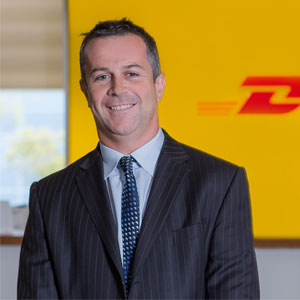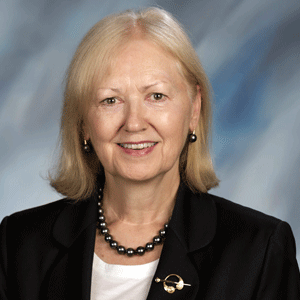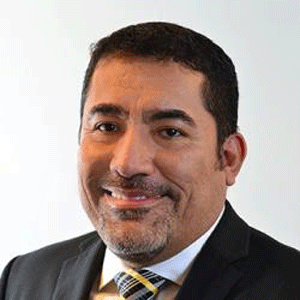THANK YOU FOR SUBSCRIBING

Obtaining Meaningful Customer Feedback in Today's Over-Surveyed World
Steve Thompsett, Chief Customer Officer, DHL Supply Chain Asia Pacific


Steve Thompsett, Chief Customer Officer, DHL Supply Chain Asia Pacific
Let’s face it - we are all suffering from survey fatigue. We are asked to rate everything, from ride-hailing apps and car services to telcos, hotels, and even our employers – sometimes with little to show for the effort. In the drive towards ever-increasing amounts of engagement and communication with customers, it is possible to combine quantity of feedback with deeper, meaningful insights when it comes to Customer Experience Management (CXM). How can we get deeper feedback and real, meaningful comments on areas to improve?
This is not to say that surveys are no longer useful or relevant today. Surveys will undoubtedly continue to play an important role, but it has to evolve. The contemporary priority is to listen smarter and respond better. Businesses need to change the way we listen to our customers’ voice and on this front, DHL’s efforts to adapt may be illustrative in showing how businesses that can skillfully navigate these changes stand to reap substantial benefits.
Digital Hearing Aids
Early last year, DHL Supply Chain adopted a radical approach to customer experience management. Previously, we conducted manual surveys with our customers every two years, with each survey taking up to an hour to complete and up to four months to consolidate for evaluation. The old system, unsurprisingly, gave us incomplete and outdated views of how customers felt about us. By the time we are able to respond, it was often too late.
We replaced that system with something far more agile and user-friendly: a web-based survey that customers can fill out within three minutes on any connected devices. The quarterly surveys are administered using CustomerGauge, the digital survey management tool that is linked to our global Customer Relationship Management platform SalesForce. The CustomerGauge tool consolidates Net Promoter Scores and other results in real-time as customers submit them. Each survey also asks customers how likely they would be to recommend our services, and provides the opportunity to submit open-ended feedback through a comment box at the end of the survey.
This technology-based approach to CXM is giving us accurate and timely insights into how our customers think and feel about us. CustomerGauge provides us with raw feedback on a country, sector, or customer level. This is particularly useful when dealing with multi-country customers where feedback may vary from market to market.
We are trying to bring in the business transformation to make tax payment simpler for every individual in new zealand
A customer operating throughout ASEAN, for example, may have highly positive feedback for us in one country, but face certain issues with our service in another. CustomerGauge therefore allows our account teams to understand the specific needs in both scenarios, rather than be potentially misled by generalized feedback across markets.
We further reduced guesswork in the customer feedback process by disabling anonymity in our surveys. Previously, customer contacts could opt to stay anonymous when providing their feedback, which often hampered our efforts to design targeted solutions to address negative or critical feedback. CustomerGauge ties each respondent’s feedback to their email address, ensuring swift and accurate follow-up by DHL – which fulfills the purpose of obtaining customers’ feedback to continuously improve ourselves. In fact, we are very encouraged by some initial results – more than half of customer responses on the new system include comments.
The new CXM methodology also ensured that all levels of DHL Supply Chain’s leadership can access direct feedback from any customer. Traditional systems ran the risk of teams downplaying customers’ negative remarks, especially by the time they arrive at the board’s desk. With a centralized real-time CRM platform, however, executives can truly understand the sentiments on the ground and be better placed to respond effectively.
Technological Foundations, Human Responses
IT plays a fundamental role in making this kind of customer focus possible. Without platforms like CustomerGauge, SalesForce or channels like email automation, businesses will struggle to regularly distribute surveys at scale, consolidate their results on a single dashboard, and circulate the results throughout all decision-making levels. However, businesses will only improve their customer experience if they utilize such technologies to enable fast, in-depth, and empathetic responses to the issues customers raise.
Business leaders must commit to taking prompt, personal response to negative feedback. As part of our CXM framework, any customer in Asia Pacific who rates us three or below –connoting plenty of room for improvement– receives a personal phone call from me as Chief Customer Officer or their local country CEO to delve deeper into the situation. Our CEO and top leaders also encourage sales and account teams to target the right individuals in our customers’ organizations when distributing the survey. Businesses should be actively seeking out those who would give critical but honest feedback to achieve the intended objective of continuous improvement.
This emphasis on personal relationships complements the fast, agile litmus test that our digital customer surveys provide. Only with that depth of relationship can we achieve our CXM strategy’s underlying goal of not just achieving high customer satisfaction scores, but also engaging our customers. The transparency of our new customer survey system gives sales and account teams clear, irrefutable evidence of their performance – and spurs them to improve in line with their counterparts. In this way, technology provides the platform for rapid, scalable, and insightful customer feedback. Acting on that feedback, however, remains a relatively traditional process built on relationships and the desire to continuously do better.
Like all of us, our customers are over-surveyed. So how do we make filling out yet another survey feel like a worthwhile use of time? By making it easier for customers to convey the right feedback, being equipped to truly listen and not just hear what is said, and taking timely action. When our customers see the value of providing feedback, they will gladly respond to your next survey. That’s how businesses can adapt the traditional survey to better leverage its capabilities and become a truly customer-centric organization.
Weekly Brief
I agree We use cookies on this website to enhance your user experience. By clicking any link on this page you are giving your consent for us to set cookies. More info
Read Also
Navigating Compliance Challenges in ESG AML and Digital Onboarding
A Vision for the Future: Automation, Robotics, and the Smart Factory
The Rise of Hyper Automation
Transforming Business Operations with Robotic Process Automation
Combining Automation with AI to Achieve Human-Like Interaction
Implementing RPA - 5 Ultimate Prerequisite
Incorporating the power of recognition into our vendors' sustainability journey
Elevating Guest Experience with Data





















